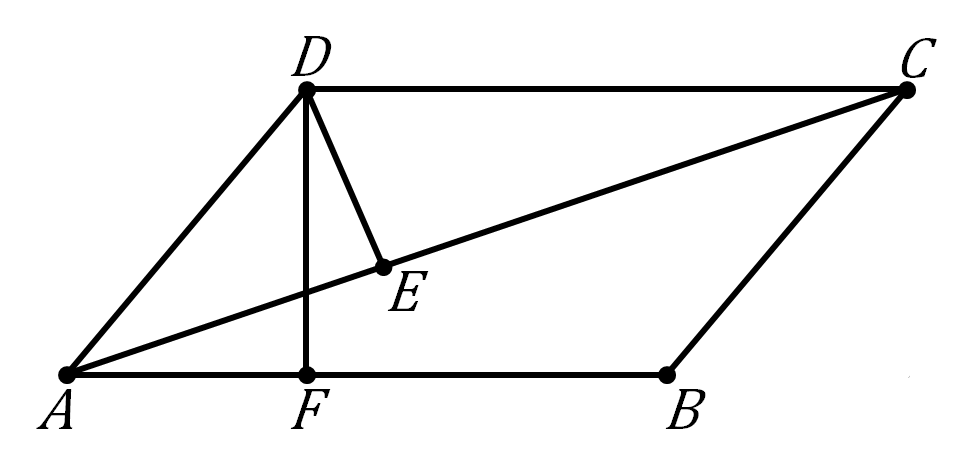A geometry problem by Yahia El Haw
A B C D is a parallelogram with A B = 6 and A C = 7 , and the perpendicular distance from D to A C is 2.
Find the perpendicular distance from D to A B .
This section requires Javascript.
You are seeing this because something didn't load right. We suggest you, (a) try
refreshing the page, (b) enabling javascript if it is disabled on your browser and,
finally, (c)
loading the
non-javascript version of this page
. We're sorry about the hassle.
3 solutions
Let x be the perpendicular distance from D to A B .
Area [ADC] = Area[ACB] = 2 1 ( 2 ) ( 7 ) = 7
Area[ABCD] = 7 + 7 = 14
So we have,
1 4 = 6 x
x = 6 1 4 = 3 7
 σ
[
A
D
C
]
=
7
2
⋅
7
;
σ
[
A
B
C
D
]
=
2
⋅
7
=
1
4
=
6
∥
D
F
∥
⟹
∥
D
F
∥
=
6
1
4
=
3
7
.
σ
[
A
D
C
]
=
7
2
⋅
7
;
σ
[
A
B
C
D
]
=
2
⋅
7
=
1
4
=
6
∥
D
F
∥
⟹
∥
D
F
∥
=
6
1
4
=
3
7
.
The area of triangle A D C is given by 0.5 X base X height = 2 1 × 7 × 2 = 7 .
The area of parallelogram A B C D is twice that of triangle A D C , hence it is equal to 7 × 2 = 1 4 .
The area of parallelogram A B C D is also equal to base X height = 6 × "perpendicular distance from D to A B ". Hence, this distance is equal to 6 1 4 = 3 7 .